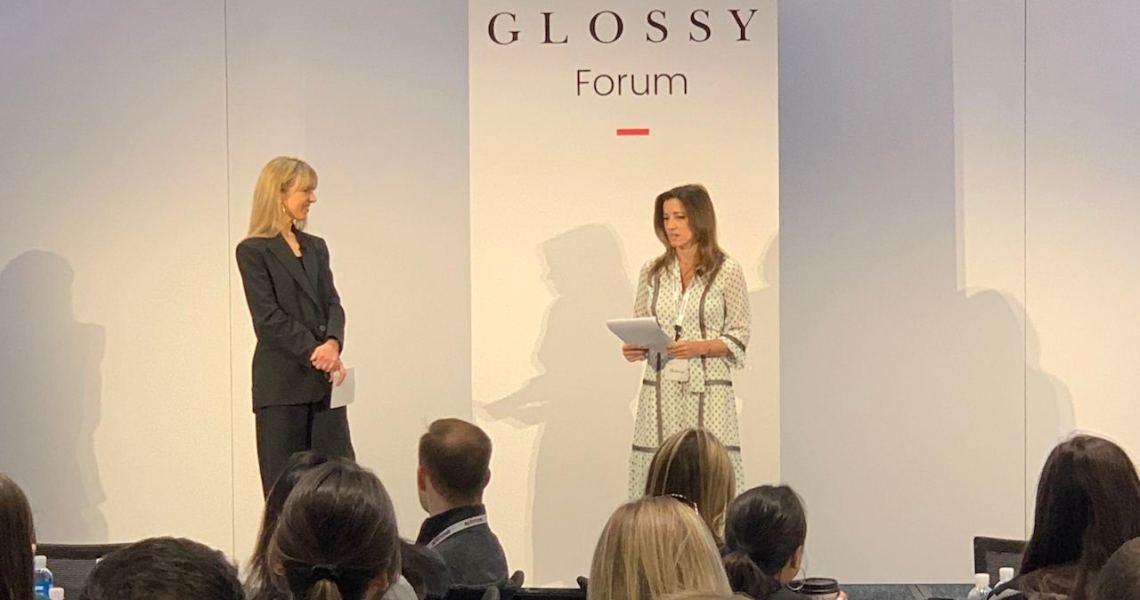At Thursday’s Glossy Forum, brand executives from fashion and beauty companies came together to discuss how they’re evolving their marketing strategies for the digital age.
Today’s consumer wants to support brands that speak to their language, and brands, in turn, are getting creative about attempts to connect: They’re engaging in dynamic ways, often using storytelling as a hook, and they’re trading out seasonal campaigns for more robust marketing plans.
We gathered some of the best speaker and attendee comments of the day, including those centered on defining a content strategy, gathering feedback from customers and taking a trial-and-error approach to marketing.
Content strategy
“As a young, small business, you’re constantly trying to keep up. The appetite for content is ferocious. At all times, the customer wants new images, new video — all that good stuff. And it seems there’s always some social media platform popping up, and then they’re asking for more content. You really have to focus on what it is you really want to achieve. No matter your company size, the expectation for content is a challenge.”
“It’s helpful to have a founder who is a face of the brand, but what’s more exciting are the people who buy into the brand’s philosophy. That’s why we love UGC.”
“A big challenge is figuring out a way to integrate content into the shopping experience that helps her get further along in the customer journey and doesn’t distract her.”
Customer feedback
“We do a lot of focus groups, a lot of surveys. We each spend an hour a week on Instagram doing community management, and I cannot stress how valuable this is — you really get to feel more of that customer connection.”
Ad position: web_incontent_pos1
“Instagram really works as a customer experience and customer-service tool, for us. We really have a direct dialog with our customer. We try to respond instantly to all comments — it’s important for us for the customer to feel like she’s part of our team. Whatever feedback she has, good or bad, we want her to feel like she’s being taken care of. And we try to be proactive, as well as reactive — for example, we’ll follow her back.”
“Everybody at the company is empowered to reach out and talk to customers. That’s a part of what we do day-to-day. If you come to one of our offices, you will see someone emailing a customer, volunteering to monitor social media or just talking on the phone with a customer. Hospitality has become a key pillar of the brand, and we really want everybody to invite customers to give us feedback.”
DTC vs wholesale
“We’ve been approached by every major retailer since the first year we launched. The wholesale model is challenged, to be polite. As a DTC brand, we need a partner that’s forward-thinking.”
“Brick-and-mortar, online and wholesale are equally divided — a third of sales each. Wholesale has a halo effect on our DTC channels, plus it gives us the opportunity to test the waters in new markets.”
“A lot of the buyers had become so far removed from the actual customer at the wholesale level, and I think that exists today — where you see a buyer at Barneys or Neiman’s or whatever, and they don’t necessarily go to all the stores around the country. In order to know the business, you’ve got to visit your stores nationwide. I was hesitant to trust what people bought when they were looking at spreadsheets.”
Ad position: web_incontent_pos2
“There’s no question that we feel closer to our customers now, as a DTC business. In order to scale your business, going direct allows you to do that in a sustainable way, while still being able to keep that relationship with the customer that’s so critical for a business today.”
Strategic partnerships
“I was a bit of snobbism about selling on Amazon initially, but then I realized that I shop there all the time. It’s just too easy not to.”
“I was nervous when i first heard about Rent the Runway, but now we work with them, and it’s really opened us up to customers who can’t afford our stuff all the time. It introduces the brand to younger girls who will eventually want to keep the pieces. It gives us amazing feedback, too.”
“With every partnership opportunity we’ve been presented, we’ve always led with the approach that brand comes before revenue.”
“Our perfect collaborator doesn’t do what we do. They make something we would want to sell in our own stores, and they’re a great company or person we admire. The collaboration will elevate the brand in some way. I think our Mike D. collaboration was cool, because the Beastie Boys are cool and music is cool. I always think about what a partnership is going to do to the perception of our brand.”
Test and learn
“I like to think of our growth as thoughtful exponential growth. We are trying as much as possible to think about what we’ve done in the past and apply that to what we want to do going forward, whether that’s a site update or an email campaign. At a bigger brand, there’s something really important about looking back and seeing what worked. But as you grow, your customer changes, so what didn’t work two years ago might work now; it’s worth investigating.”
“Keep trying things. There’s so much opportunity now, you should never be comfortable If you feel comfortable.”
“I am not risk-averse. My mentality is: Test it, try it, learn from it. I would rather be first-to-market. For brands to be innovative, they have to be allowed to fail. Innovation has to run through every single department, there needs to be a uniform approach to it, and management needs to support it.”




